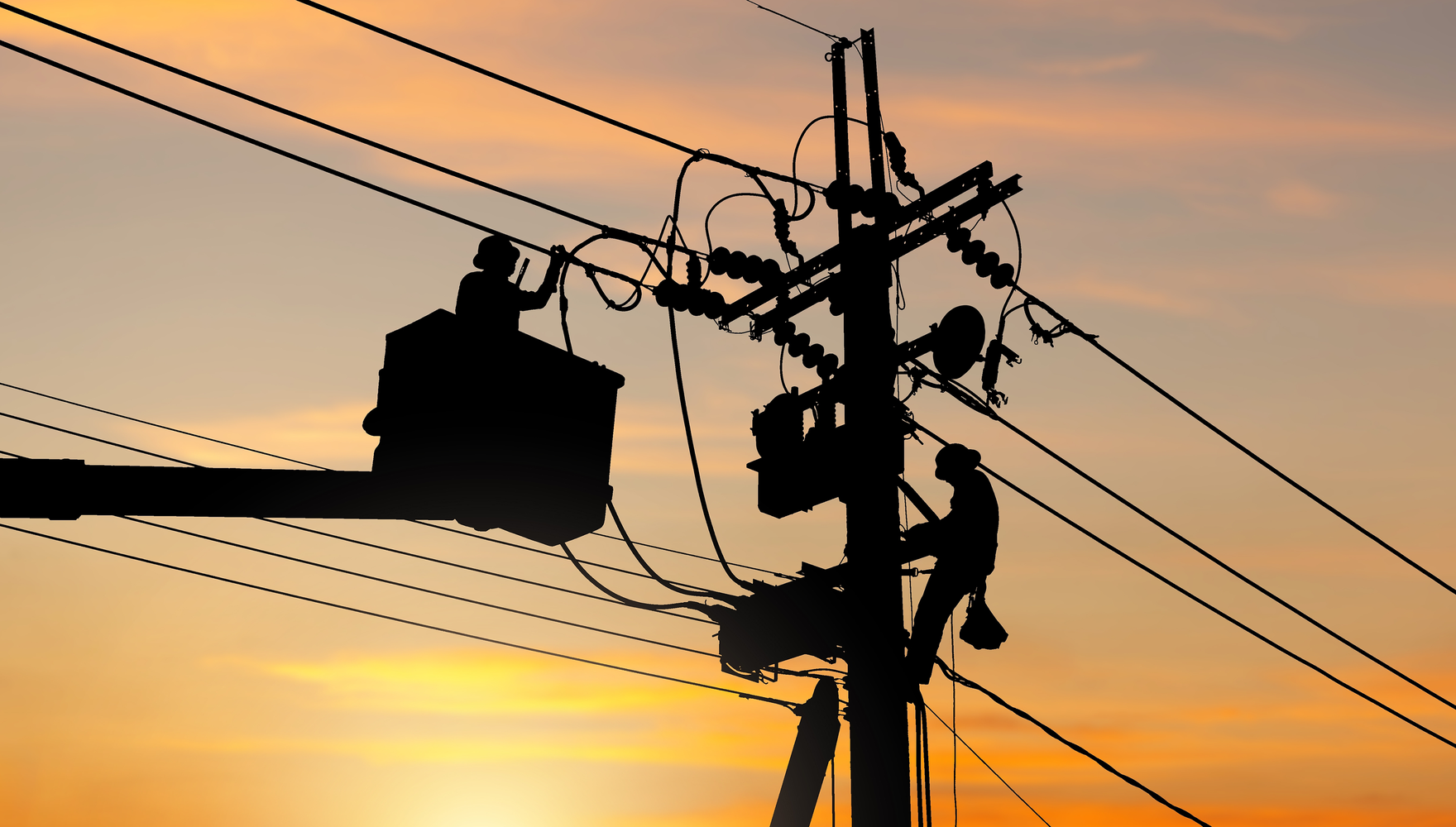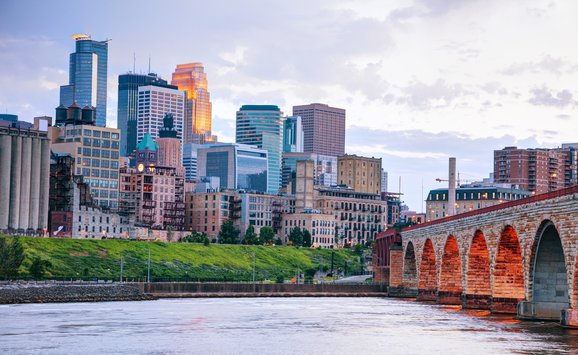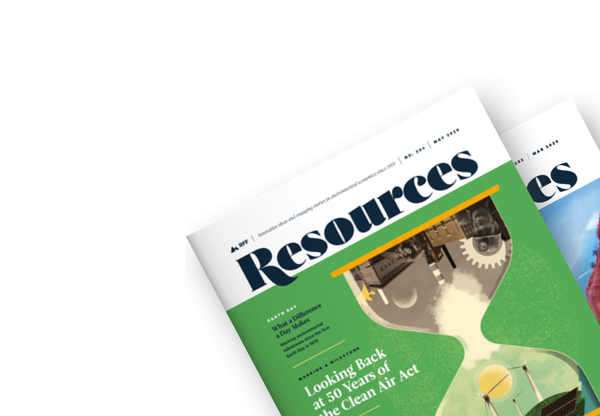In this week’s episode, host Daniel Raimi talks with Diana Hernández, codirector of the Energy Opportunity Lab at the Center on Global Energy Policy at Columbia University, about the struggles that ordinary Americans face in accessing affordable and reliable energy. In her recently released book, Powerless: The People’s Struggle for Energy, Hernández documents how energy insecurity affects people across the country and analyzes policy solutions that can help address the challenge. Hernández explains the interconnections among housing, public health, and poverty through stories which highlight the highly personal nature of energy insecurity and the difficult choices many Americans must make between essential expenses. Hernández then outlines potential improvements to existing energy-assistance programs, including increased support for year-round energy expenses and program adaptations to accommodate a changing climate.
Listen to the Podcast
Audio edited by Rosario Añon Suarez
Notable Quotes
- Energy insecurity forces households to make difficult choices between essential expenses: “The environment of poverty is always complex, and it always involves these different decisions that are, in some ways, the hardest kinds of choices to make, because we’re really talking about pitting essentials, like food or medicine, against another, like the light bill.” (16:12)
- Existing energy assistance programs do not meet Americans’ energy insecurity needs: “Less than 20 percent of households that are eligible for Low Income Home Energy Assistance Program (LIHEAP) actually receive it. So, there are enough barriers to accessing energy assistance through LIHEAP, which means it’s on the books, but it isn’t necessarily having the impact that it could have relative to the need.” (21:56)
- Access to assistance for one essential need can have significant spillover effects, supporting broader health and access to other basic needs: “A lot of previous work—especially work that I led with my team—has shown that when people have multiple sources of food-related aid like Supplemental Nutrition Assistance Program (SNAP) and Women, Infants, and Children (WIC), they’re more likely to be energy secure. Likewise, when people have energy assistance, they’re more likely to be food secure. So, the fact that the social safety net is threatened by the most recent reconciliation bill—I think it jeopardizes people that are reliant on these resources to eat and heat their homes.” (27:15
Top of the Stack
- Powerless: The People’s Struggle for Energy by Diana Hernández and Jennifer Laird
- Abundance by Ezra Klein and Derek Thompson
- Plundered by Bernadette Atuahene
- Debí Tirar Más Fotos album by Bad Bunny
The Full Transcript
Daniel Raimi: Hello and welcome to Resources Radio, a weekly podcast from Resources for the Future (RFF). I’m your host, Daniel Raimi. Today we talk with Dr. Diana Hernández, associate professor of sociomedical sciences at the Mailman School of Public Health, and the codirector of the Energy Opportunity Lab at the Center on Global Energy Policy at Columbia University.
Along with her coauthor, Jennifer Laird, Diana recently published Powerless, a new book that richly documents the struggles that ordinary Americans face in accessing affordable and reliable energy services. The book highlights how this issue affects people in all corners of the country and also discusses the policies that governments can use to address the challenge. We’ll talk about all of this and more, so stay with us.
Diana Hernández from Columbia University, welcome to Resources Radio.
Diana Hernández: Happy to be here. Thank you for having me.
Daniel Raimi: It’s our pleasure. I want to start by saying congratulations on the success of your book, Powerless, with your coauthor, Jennifer Laird. When I went to buy it on the website of the publisher, it was sold out, and that doesn’t happen often with academic or academic-style books. So, it just speaks to the impact that this work is having. So, I want to first say congratulations.
Diana Hernández: Thank you so much. I’m also excited that it’s selling out and people are receiving it well. It’s a real honor for that reception to be the case.
Daniel Raimi: That’s really great. Well, I want to ask you the first question that we ask all of our guests, which is to help us understand your life path and how you got into the field of energy. I know you work at the intersection of multiple topics, but I’m curious how you came to be working on these energy-related issues.
Diana Hernández: I guess to answer that question, I want to both be personal and then talk about this in terms of other people. So, I want to take you to my—I don’t know—seven-year-old self. I lived on the sixth floor of a building—a Section 8 subsidized housing building in the shadows of Yankee Stadium in the Bronx.
I remember sitting at the top of the steps on the sixth floor and just thinking about reconfiguring the spaces. So, we lived in Apartment 6L, and I was like, “Could we somehow change up the space and also have 6K and 6J and 6H?” It was about in some ways reimagining space as a child and then also wanting to occupy more space. If I had to analyze that moment in my childhood, it was a way of thinking about community and bringing people and our families together and being able to grow older together by reconfiguring the space.
I think that there’s a part of me that is very located in housing. So, when I stepped into the work of energy, it was really through a housing lens. And that lens, I think, crystallized because I was speaking to other people. I just got back from Cambridge, and I went back to the block and the home that I was living in when I was doing my dissertation in the mid-2000s in Dorchester. It was there that people opened up their homes to me. At that point, it wasn’t about reconfiguring the space; it was more about listening. It was about listening and really believing people as they were sharing their stories about different elements of energy. Obviously, in New England and Massachusetts, it’s cold, and people were talking about being in a cold home. There were times when I was visiting and doing these home-based interviews and I could see my own breath in the air.
There was also an aspect of witnessing firsthand the kinds of accounts that people were describing, and then also trying to distinguish between the stories that were about those thermal comfort type of issues—which I didn’t have the language for at that point—but that had to do with these extremes and the temperature being too hot or too cold for instance. And then listening to the issues around affordability and people interfacing with bills that just felt too high or where they had fallen behind.
And then there was another piece of it, which was about agency and the ways in which people were not just experiencing these issues but managing them. That was kind of the beginning, I think, of trying to make sense of the energy issue. So, it wasn’t necessarily because I’d always had an interest in energy; it was because I was following a path of what other people were talking about with respect to energy. And it was not just “other people,” but low-income, low-resourced households in disadvantaged communities—communities like the one in which I had grown up that were neglected and disinvested in.
For me—because I grew up in a similar context—I didn’t necessarily assume that the people were flawed. I actually understood from a sociological perspective—which is what my training is in—that there were structures that were creating these realities. So, I both followed the narrative of people that were talking about these issues, and that’s what landed on energy and a deepening understanding of energy issues. And then I also tried to locate this in the scholarly work with a structural lens, in many ways to not make it about individuals and individual failing, but really about the structural conditions that create those realities.
Daniel Raimi: Right. Yeah, that makes a lot of sense. Those personal experiences with one’s own life and one’s research experience is always so formative for all of us.
I’d love to ask you now to say a little bit more about the intersection of the multiple topics that you work on. We started with housing, you mentioned energy, of course, and it’s also public health. So, in broad terms—I know we could probably talk about this for hours—but in general terms, how do you see those three topics intersecting in the work that you do? Housing, public health and energy.
Diana Hernández: I would probably add in poverty because that is really … In some ways, it’s that kind of vulnerability and poverty, the inequity, that I think is really what drives my interest at that intersection.
But, basically, I focus on household energy as a social and environmental determinant of health. In many ways, my work has been at the edge of a lot of different disciplines. In public health, there is a lot of interest in the social determinants of health: how life chances are determined by income, by race, by age, and issues of the life course by neighborhood conditions.
In many ways—and I can go on and on about the different kinds of social determinants—but in some ways, these are the kind of usual suspects of inequality that show up and determine in which groups and where advantages and disadvantages are located.
So, that’s one line. But, the work that I’ve done has also been about environments, and those environments being the housing environment, being the neighborhood environment, and then also being about climate change and issues that are changing our environments because of urban heat island effects and that kind of thing.
So, in that way, it’s like the social-ecological model where we are thinking about the interlinks between these different areas and these different environments, and how a neighborhood dynamic around safety, for instance, might render the home environment that much more important. So, people are spending more time at home and then are exposed to extreme indoor temperatures and other matters that are happening indoors. And then climate change is basically a shape-shifter in all of that. So, in that way, it’s looking at a range of environments, and I think researchers have often committed to one area.
So, neighborhood effects are a huge area in public health, but it really doesn’t talk about the dynamics in housing, which I understood to be very important for these larger environmental factors that are outside of, but very much contributing to, what’s happening at the neighborhood and housing scale. So, that’s health, that’s environment, and where housing and energy are connected. I would say that energy is basically sitting within the housing environment, and it’s more core when we think about those different layers of environment.
And again, it’s more proximal; it’s more determinate in many ways of the felt experiences of life and of a space and a place. I’ve been motivated by thinking about why some groups are impacted by some issues disproportionately, but also by what we can do about them. And I think that that piece around the solutions or around finding paths that, first of all, honor people’s experiences, but also move beyond them, is a little bit of a testament to my belief that people are more than their circumstances. I think I’m a living example of that, but also, it’s my belief in improvement and betterment and what, to me, is the real obligation. Research is not just to describe things, but to be on a path to improving problems that are surfaced in research.
Daniel Raimi: Right. And I’m looking forward to asking you about some of those opportunities for improving energy-access issues and energy-affordability issues in just a couple minutes. But first, I would love for you to say a little bit about some of the great stories that are in your book. You have stories from all over the United States—Detroit, New York City, Philadelphia, Puerto Rico, and all sorts of other places where you talk not just about the challenges that people face regarding energy access and affordability, but also the types of strategies that individuals and communities take to empower themselves to try to address these issues. So, I’m wondering if you can maybe share an example that sticks out to you.
Diana Hernández: There are so many stories. I think I’ve gotten to the point where it’s like, “I have stories for days,” and I love that, right? So, let me tell you about the approach and why the stories are so central to the book, and then I’m happy to get into one or two of the stories.
I’m a sociologist by training, and most sociologists that do qualitative work basically describe overarching themes. They get into specific concepts, and they draw out what they’ve learned by providing illustrative quotes. And that style is helpful. Oftentimes, it makes people understand that particular theme. But what I wanted to describe in this book is people’s lives and how these energy issues sit within the broader context of how people are living, where they’re living, and the kind of work that they’re doing to live better.
So, the narrative approach was very intentional. I had been toying with this approach in previous publications, but the book really allows you to just show a lot of different stories and really help the reader to reach that same understanding and the findings essentially by following the path of the story.
One story that sticks out in my mind, and that is one of the anchor stories in the book, is the story of Alicia, and she’s a mother that I met in Memphis. Her energy story was, in some ways, at the surface level, about a $480 arrearage. That arrearage is what basically motivated her to go to the energy assistance office. She went there first thing in the morning, grabbed her toddler, and just made it out because she was facing a utility disconnection. That was about her seeking help. But, if you only took that part of her story, you wouldn’t understand all of the efforts that she was taking that were preventive in nature to try to avoid a high utility bill, and all her efforts that were responsive in nature. She had put up blackout shades. She always reminded the children to not use energy—to turn off the lights if they weren’t in a room. She was very vigilant about the indoor temperature and just cautious about energy consumption in general. She reluctantly asked her father for help. She had a work-limiting health condition. She actually hurt her back. She had an injury at work, and that back injury then made it more difficult for her to find work that was appropriate for her health condition. So, it was about financial management; it was about energy conservation.
Her story was also about the hard choices in her case. She talked about her son really needing a new pair of shoes. His shoes were broken to the point of just needing to be replaced. And she talked about patching up those shoes instead of actually replacing them because she prioritized the light bill. She also talked about the indignity of a utility shut-off and how during a shut-off in the past, they had lost all of their food, and they were basically living out of a cooler trying to keep cold cuts cold, as they managed through. And then, finally, she broke down and asked her father to bail her out of that particular disconnection.
To me, the essence of telling those stories and revisiting them in the different chapters and trying to be more robust in explaining the human condition is partly about the contextualization that’s often missing when we talk about the conditions of poverty. The environment of poverty is always complex, and it always involves these different decisions that are, in some ways, the hardest kinds of choices to make, because we’re really talking about pitting essentials, like food or medicine, against another, like the light bill, or in Alicia’s case, needing to replace a pair of shoes.
In some ways, I’ve come to realize that a superpower of mine is that I’m highly sensitive, and I thought about that work. When I did the research, I was not a mom. When I was writing up the book, I became a mom, and I was able to really empathize and sit in Alicia’s shoes for a minute, figuratively at that point. The idea that you wouldn’t be able to provide for your children, what does that mean? How does it feel to look at your child and know that they really need something, but you’re not in a position to provide it? There’s a lot of responsibility, and obligation, but also guilt that’s associated with that, and shame, and stigma.
And those were the pieces where the objective wasn’t about reinforcing that for readers to pat themselves on the back, but to really channel our ability to connect as human beings and see how powerful and important that is when you’re able to make those connections. It stops just being about a bunch of tables and charts and correlations and points of significance from a statistical perspective. It also is about a heart and mind connection and then the feeling of, “What can I do?” I think that that’s really the spirit with which the book was written. This idea that we want you to feel really empowered as readers to understand the complexity of what’s going on, but also to feel like you can do something and you ought to do something. That call to action is so central to this work as well.
Daniel Raimi: Yeah, it is really clear in the book, and I just want to reinforce to listeners how rich and deep many of these stories are in the book. And, of course, there are charts and tables too. There’s plenty of those. It’s not like the analysis is not grounded in data and analysis, but there’s so much more to it as well.
As per usual on this show, we’re really just scratching the surface of all of this richness. I would love to ask you now, Diana, a little bit about one policy in particular, a federal policy that’s called the Low Income Housing Energy Assistance Program, or LIHEAP. We’ve talked about it before on the show. You spent some time in the book talking about the ways in which LIHEAP falls short. So, I’m wondering—again, we could talk for a long time about this—but I’m wondering if you could tell us, in just a minute or two, what are some of the key issues that you see with LIHEAP?
Diana Hernández: Well, LIHEAP is really the backbone of the energy assistance safety net in the United States, and it is the way in which most states are allocated resources to help individuals and households when they are falling behind on their utility bills or need help, primarily with heating their homes. The origin story of LIHEAP is that it came out of a crisis. It was born from a crisis—the 1970s oil crisis, which really impacted the cost of heating fuels.
Basically, the original design of that program has stayed with the program even though it’s 40 plus years old. On the one hand, it has a bias toward heating. It is really crisis driven. So, it really almost prioritizes the cases, like Alicia’s, where people are facing a disconnection and they are in debt to the point where their energy access is threatened, or actually it has been compromised completely—like it’s unavailable because of the de-arrearage and the disconnections due to nonpayment.
It’s also really underfunded. One of the things that we draw a big analogy around is food insecurity and Supplemental Nutrition Assistance Program (SNAP) benefits. Notwithstanding everything that’s happening now, there’s a monthly distribution of SNAP benefits with LIHEAP. It’s usually one time per year, and then in some cases, emergency assistance for people that are facing a utility disconnection. So, in that way, it’s inadequate because it doesn’t actually fully cover utility expenses.
Less than 20 percent of households that are eligible for LIHEAP actually receive it. So, there are enough barriers to accessing energy assistance through LIHEAP which means it’s on the books, but it isn’t necessarily having the impact that it could have relative to the need—a need that we make more obvious in this book.
Daniel Raimi: Right. And just in case listeners were wondering—most listeners probably know this—but SNAP, that you were referring to, is the Supplemental Nutrition Assistance Program, which is a federal food benefits program.
Diana Hernández: That’s right.
Daniel Raimi: Let’s stay on LIHEAP for another couple minutes before we close it out. You and your coauthor have a variety of suggestions for how to improve the implementation of LIHEAP, as you just suggested. Can you tell us about some of those?
Diana Hernández: Yeah. Well, I mean, one is definitely to revisit the formula so that it’s more balanced and can support cooling. So, it shouldn’t just be a heating assistance program. We now live on a hotter planet, and many more people are reliant on cooling devices like air conditioning. And, definitely, there’s an element to … I mean, in some states there’s no money that’s allocated to cooling assistance and it’s seasonal just for the heating season. So, definitely expanding cooling assistance and thinking about the geographies. So, warm weather states, particularly in the southeast, that have a lot of poverty and have also a lot of burden around cooling are some of the least funded states.
LIHEAP could increase the pot overall, but also reallocate based on where we are in the current moment around high heat, thinking about monthly distributions of energy assistance. So, it’s not just that one time per year plus an emergency distribution, but—just like people have a monthly utility bill—just making sure that there is a subsidy that is available throughout the year.
Those are some of the examples of shifts that are necessary. But I think, overall, we need more funding and a different kind of distribution of the resources that are available in the places where the burdens are increasingly highest.
Daniel Raimi: That makes so much sense in the context of a changing climate. One last question about LIHEAP, Diana, before we go to our Top of the Stack segment. There’s a news item that some of our listeners may have seen, which is that I believe a couple months ago almost the entire federal staff of LIHEAP was terminated. I think this was—I don’t remember exactly how many people it was—maybe it was dozens of people.
Diana Hernández: 14.
Daniel Raimi: Okay, 14. So, it just made me wonder: This is a program where the federal government is distributing dollars to the states, and the states are implementing the program. Can the program function the way it’s supposed to without federal staff?
Diana Hernández: Well, I just have to say that I had the honor of seeing and meeting some of the LIHEAP staff that were laid off at the National Energy and Utility Affordability Coalition’s Annual Conference. Honestly, we gave them three standing ovations. They’re literally the heroes of energy assistance in this country. And I’m so glad that I was able to be in a space that was honoring their service. I mean, the truth is that most of the money was out the door for this particular budgetary season, and there were a few million—I forget the exact number that was outstanding—and one person stayed behind to distribute all of those resources to the states.
So, as of now, the LIHEAP funding is all spent down for the, I guess, last budgetary season moving forward. I mean, we both need the money that’s allocated by Congress to support this program, and we need the staff to be able to ensure its distribution and its timely distribution.
So, can LIHEAP function without staff? I mean, I’d be hard-pressed to say yes to that. I think, absolutely, you can’t have money on the table without the folks that are actually getting it out the door. And you could tell they were really diligent in doing their work and providing this important service to our country.
Daniel Raimi: Yeah, it’s going to be a fascinating issue to watch. We’ll make sure to pay attention to it in the coming months to see how the actual implementation of the program is going to be affected and if it is able to do what it’s supposed to be doing.
Diana Hernández: I just want to make an additional point about the connections between LIHEAP and SNAP, between energy assistance and food-related assistance. A lot of previous work—especially work that I led with my team—has shown that when people have multiple sources of food-related aid like SNAP and Women, Infants, and Children, or WIC, they’re more likely to be energy secure.
Likewise, when people have energy assistance, they’re more likely to be food secure. So, I think the fact that the social safety net is threatened by the most recent reconciliation bill jeopardizes people that are reliant on these resources to eat and heat their homes, and they’re very synergistic.
There’s both attention around those difficult choices that people have to make between heating and eating, but also when the resources are unavailable on one side of the ledger or the other, or in all likelihood in both, plus healthcare expenses, and so on. I think what we will likely be following is a really frustrating reality for low-income and low-resourced households and communities moving forward, and a real challenge in not just meeting everyday needs, but also those needs that are kind of exacerbated by, again, a changing climate that is requiring us to use more electricity in the summer to run air conditioning units. Because in general, we are just much more reliant on energy for everyday everyday activities from learning to entertainment to the use of electric medical devices. There’s so many different pieces to this that to me, my stomach is literally in knots thinking about how people will just be facing much harsher realities in the not-so-distant future as a result of these kinds of government cuts.
Daniel Raimi: Yeah, that’s a somber note to end on, but it’s appropriate in its importance.
I just want to say again, Diana, thank you for coming on the show. Congratulations again on your book. It’s obviously a super timely issue, so I’m glad we’re able to talk about it today, and I’m glad that lots of people are learning about it out in the world.
I’d love to ask you now the same question that we ask all of our guests at the end of each episode, which is to recommend something that you’ve read or watched or heard that you think is really great. It can be related to energy or the environment, or not really. We’re not particularly strict about the types of recommendations that people offer. So, Diana, what’s on the top of your literal or your metaphorical reading stack?
Diana Hernández: So, I just got through Abundance by Ezra Klein and Derek Thompson.
I also got through a good friend, Bernadette Atuahene’s Plundered, which is another really rich story around property tax foreclosures and how that’s another hidden hardship.
And I have to say that my four-year-old and I are obsessed with Bad Bunny. I’m Nuyorican, and I have to say that his last album, DeBÍ TiRAR MáS FOToS, was just an homage to Puerto Rican culture in all of its complexity. And it’s political because it’s about ensuring that we keep our own and our space and hold our ground. There are ways in which I’ve been hearing the same songs because with four-year-olds, they get locked into things. But, every time, it’s just a joy, and this is months-long joy. So, we’ve been holding onto that, and I’m excited about going to Puerto Rico later this summer to talk about the book, but also just to be in the culture.
Daniel Raimi: Yeah, that sounds fantastic. Yeah, I need to check that out. I have a six-year-old and a two-year-old, so we’ll see how much they could dig the Bad Bunny, but I’m excited about checking it out.
Diana Hernandez: Well, for us, it’s also that she gets to speak Spanish and is singing in Spanish and all of that. And so we’re really excited about just having that connection, so many generations removed from the island, but it’s still so important. But, I hope your kids really get into it and they start dancing and doing all the things.
Daniel Raimi: All right, awesome. Sounds like fun.
Well, one more time, Diana Hernández from Columbia University, thank you so much for coming up to the show and sharing this work with us. And again, congratulations on the book.
Diana Hernandez: Thank you so much, Daniel. Really appreciate being here.
Daniel Raimi: You’ve been listening to Resources Radio, a podcast from Resources for the Future (RFF). If you have a minute, we’d really appreciate you leaving us a rating or comment on your podcast platform of choice. Also, feel free to send us your suggestions for future episodes.
This podcast is made possible with the generous financial support of our listeners. You can help us continue producing these kinds of discussions on the topics that you care about by making a donation to Resources for the Future online at rff.org/donate.
RFF is an independent, nonprofit research institution in Washington, DC. Our mission is to improve our environmental, energy, and natural resource decisions through impartial economic research and policy engagement. The views expressed on this podcast are solely those of the podcast guests and may differ from those of RFF experts, its officers, or its directors. RFF does not take positions on specific legislative proposals.
Resources Radio is produced by Elizabeth Wason, with music by me, Daniel Raimi. Join us next week for another episode.









